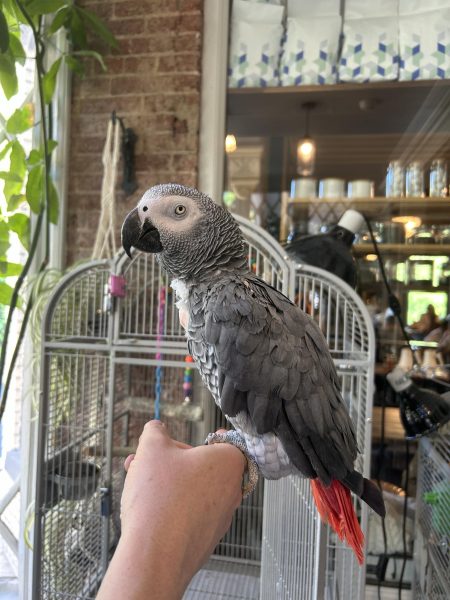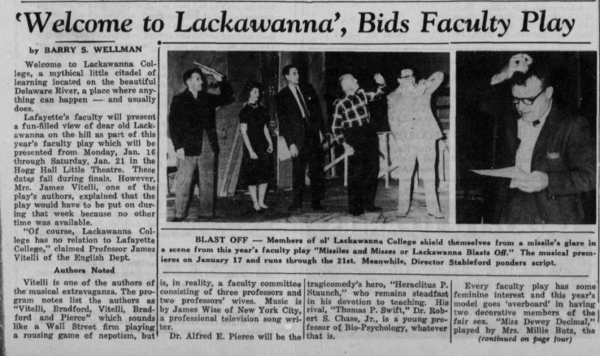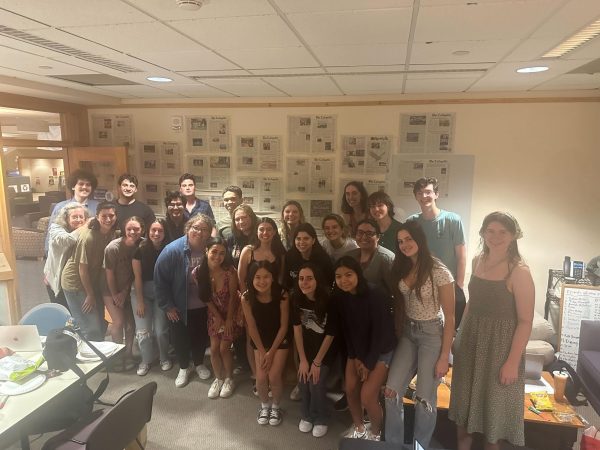Cameron Cloud ’23 creates video game to show rapid population growth of the spotted lanternfly
Cameron Cloud ’23 designed a video game that is purposefully difficult to beat to show the rapid multiplication of spotted lanternflies. (Photo courtesy of Cameron Cloud ’23)
December 10, 2021
Most Lafayette students can recall being urged to kill spotted lanternflies last fall whenever they pass by one. While the red-dotted pattern on their wings may be pretty, these invasive insects are actually ruining agriculture and biodiversity in the United States — and they’re multiplying rapidly. Biology major Cameron Cloud ‘23 developed a video game called “Lanternfly Game” to raise awareness about the invasive species.
The game was inspired by a paper published by Biology Professor Daniel Strömbom with the help of student researchers that mathematically models the spread and growth rate of the spotted lanternfly in order to investigate the effectiveness of mitigation strategies.
Cloud, who joined Strömbom’s team as a sophomore, created the “Lanternfly Game” to communicate the results of the study and raise awareness of the spotted lanternfly’s presence in and around Lafayette’s campus. She said that the significance of the game is “to get across the idea that it’s difficult to make the population decline and the controls that we have right now probably aren’t sufficient enough.”
The game begins with images of five spotted lanternflies on the screen. The player must then try to kill all of the spotted lanternflies by clicking on them. However, as the remaining lanternflies replicate rapidly, it becomes increasingly difficult to eradicate them all. This represents the results from Strömbom’s paper, which found that each individual spotted lanternfly will generate five to six new adults in the next generation.
“The game itself is really hard to win,” Cloud said. “It’s important for people to keep in mind: when they see them, kill them. They’re really hurting the environment.”
Cloud created the game completely on her own. While she had taken one computer gaming course her freshman year, Cloud had little background in programming coming into the game’s development. She had to teach herself various programming languages such as JavaScript, CSS and HTML. The whole process was about two months long, running from the beginning of August to the end of September.
“I knew I didn’t want to do things in a lab, but I did want to make an impact somehow. And I think being able to do this game emphasizes that you don’t have to be specifically doing things in a lab to show important concepts about biology,” Cloud said.
For now, Cloud will not be pursuing any further development of the game. Next semester, she will be working with a math professor to add a new variable to the model that will provide more insight into the spotted lanternfly growth rate. Strömbom and his team will continue their investigations to explore the effectiveness of biological controls on managing the spotted lanternfly population.
“I didn’t really have an idea about what research consisted of and I feel like this experience wasn’t representative of a traditional research experience,” Cloud said. “I felt lucky that I was able to do something impactful, like research, but in a unique type of way.”















































































































